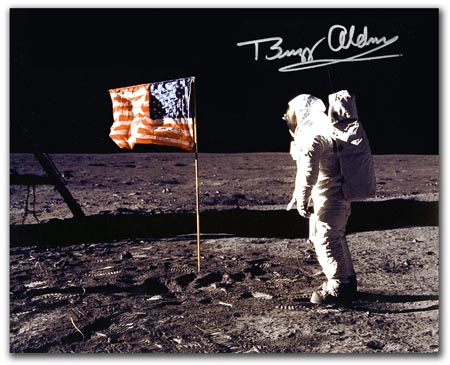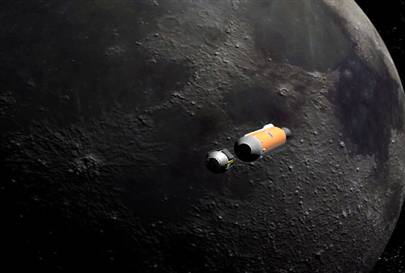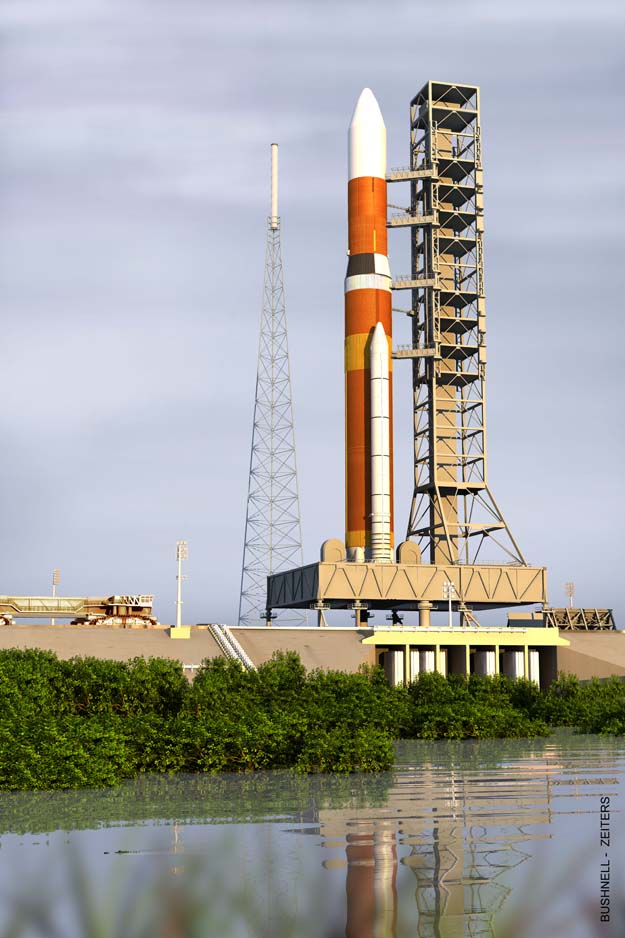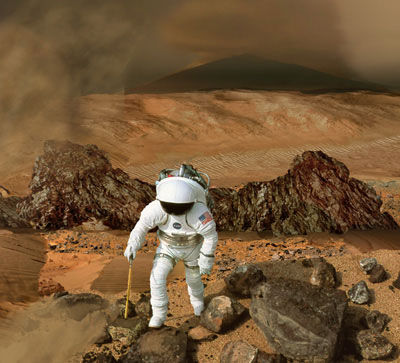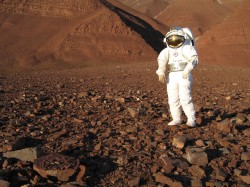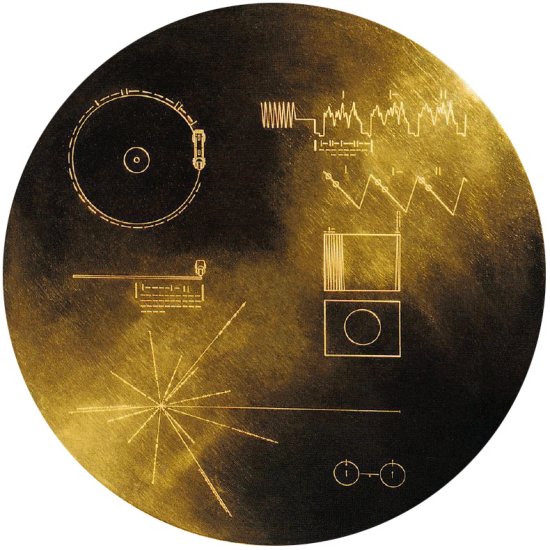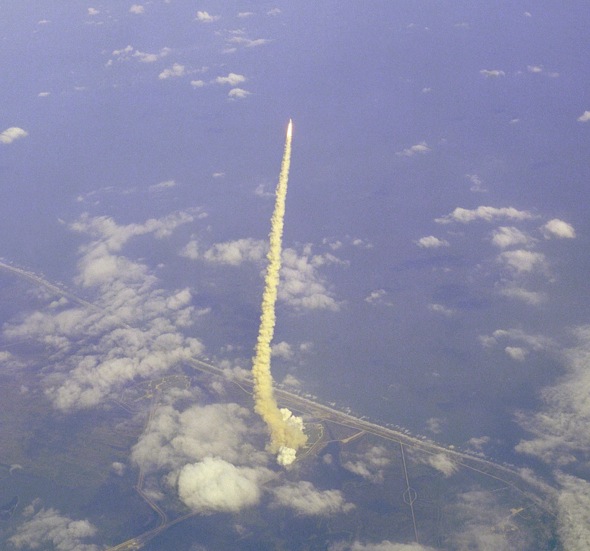The world knows the huge potential China and Russia have for space exploration. Russia is maintaining a strong presence in space with their sturdy Soyuz program and China has set its sights on having their very first “taikonaut” EVA at the end of this year. But where does this leave NASA? The US space agency has spearheaded the exploration of space for the last 50 years, but amongst all the talk about NASA setbacks, overspending and delays, could the glory days be coming to an abrupt end? In May, the legendary astronaut John Glenn spoke out against Shuttle decommissioning and last week, US Senator Bill Nelson called a meeting at Cape Canaveral to raise concerns about announced job cuts in 2010. Now, the most famous NASA ex-employee and second man on the Moon, Buzz Aldrin has voiced warnings that the US could lose its grip on space and begin to be left behind by Russia and China…
On July 20th, 1969, the Apollo 11 Lunar Module Pilot waited for Neil Armstrong to make the first footprint in the lunar dust. Soon after, Buzz Aldrin joined Armstrong on this momentous step and making world history, setting the world alight with optimism that man was just about to embark on the next phase of evolution: leaving Earth and exploring the stars. Unfortunately this dream was only realised for three years (until 1972) after six successful lunar landings (Apollo 11, 12, 14, 15, 16 and 17), and to this day the Apollo 17 mission touch-down (December 15th, 1972) remains the last time we landed on the Moon.
Although we may not have revisited our natural satellite for the best part of four decades, we have been busy with our focus on the robotic exploration of the Solar System. But work has started on the Shuttle replacement, the Constellation Program, with the promise of sending man back to the Moon by 2020 and then Mars soon after, can we begin to get excited that NASA is gaining momentum for the next “giant leap for mankind?”
Many prominent figures are now worried that the light is beginning to dim for the future of NASA. NASA prides itself on developing new technologies, spearheading the push into space, but what happens when the funding dries up and other nations pick up where they left off? One voice that cannot be ignored is that of Buzz Aldrin who has voiced his grave concern that NASA, and indeed the USA, risks falling behind China and Russia in the “space race” if efforts were not redoubled by future US governments. With the US presidential elections looming, Aldrin has vowed to lobby both Barack Obama and John McCain to “retain the vision for space exploration,” not only to maintain, but increase NASA funding.
During an interview with the UK’s Sunday Telegraph newspaper he said, “If we turn our backs on the vision again, we’re going to have to live in a secondary position in human space flight for the rest of the century.” And he is not alone with this concern. Both fellow retired astronaut John Glenn and US Senator Bill Nelson have recently spoken out about their concerns for NASA’s future, ensuring the space exploration debate will remain alive over the coming months.
Although Russia has a long and proud history in human space flight, the Chinese are showing their thirst for a big push into space, with a manned mission to the Moon on the cards. “All the Chinese have to do is fly around the Moon and back, and they’ll appear to have won the return to the Moon with humans. They could put one person on the surface of the Moon for one day and he’d be a national hero,” Aldrin added. Plus, Russia’s Soyuz program could be extended for manned missions beyond Earth orbit he pointed out.
There is a real worry in NASA that the US could lose its foothold in the leadership of space exploration, so it is hoped big voices within the ranks of legendary astronauts might begin to get the future government thinking about how important space exploration is to the US.
Source: Telegraph.co.uk

